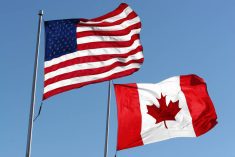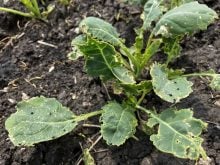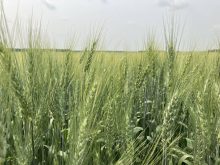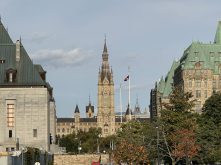News of a breakthrough in a seven-year long canola dispute with China has analysts rethinking export numbers, prices and basis levels for the commodity.
Canadian Prime Minister Justin Trudeau and Chinese Premier Li Keqiang announced during Trudeau’s visit to China that a permanent solution to the blackleg disease issue is days or weeks away.
November futures prices immediately jumped $10 per tonne on Aug. 31 and ended the day up $7 per tonne.
Derek Squair, president of Agri-Trend Marketing, quickly bumped up the China export number in his canola supply and demand chart to 4.3 million tonnes from 3.2 million tonnes.
Read Also

Farming Smarter receives financial boost from Alberta government for potato research
Farming Smarter near Lethbridge got a boost to its research equipment, thanks to the Alberta government’s increase in funding for research associations.
He expects basis levels that had widened to $43 under from $15 under a month ago to ease back down.
“I think we’ll narrow right back in there (but) maybe not back to $15 until after Christmas,” said Squair.
A long-term deal has yet to be signed but news that one is pending has calmed nerves in the canola trade.
“Once it does get settled the whole market will breathe a sigh of relief and get back to business and just make it a much more efficient market,” he said.
China first implemented blackleg restrictions in 2009 and the issue has been causing indigestion among canola exporters ever since.
The latest source of heartburn occurred in February when China said it would implement a new policy on April 1 requiring shipments to contain less than one percent dockage, which is far less than the Canadian Grain Commission’s standard of 2.5 percent.
The implementation date was later extended to Sept. 1, but that has now been put on hold as well while negotiators attempt to hash out a long-term solution to the matter.
“This is a significant step towards resolution of this long-standing issue,” Patti Miller, president of the Canola Council of Canada, said in a news release.
She applauded the efforts of Trudeau, trade minister Chrystia Freeland and agriculture minister Lawrence MacAulay.
“Their timely interventions mean that a science-based solution is in sight and that Canada’s most valuable export to China can continue,” said Miller.
Government officials are providing no hints as to what changed to spur movement toward a resolution to the longstanding trade irritant.
Squair said a rumour is circulating around the trade that there will be a compromise on the allowable dockage.
“I’ve heard through the grapevine that it could be 1.75 (percent), like something in the middle between 2.5 and one,” he said.
Brian Innes, vice-president of government relations with the Canola Council of Canada, said such a compromise would involve Canada agreeing to a non-science based solution because that would do nothing to reduce the risk of blackleg transmission.
He hinted there may be something else in the works.
“I can’t comment on the specifics, but what I can say is that we know one of the ways that we can reduce the risk of blackleg is to lower the prevalence of blackleg in Canada,” he said.
The council has funded a variety of research projects over the last seven years that have resulted in best management practices for reducing the incidence of blackleg and minimizing the risk of it spreading to China’s rapeseed crops.
Innes said the pending agreement will cover all of China’s blackleg concerns, not just the dockage issue.
The deal will be a science-based solution that addresses China’s concerns while providing peace of mind for Canadian exporters, he said.
“Since 2009 we’ve operated under provisional arrangements. Some of those arrangements have been from year-to-year,” he said.
“What we need is a long-term solution that enables stable trade.”


















